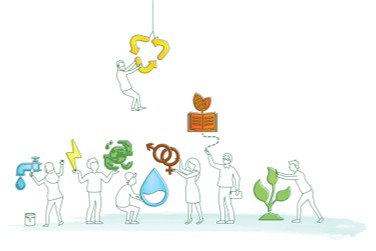Enterprise Profile
Enterprises in this category have a range of technology-based offerings that can be applied across sectors. In most cases, the solutions are aimed at treating and/or purifying water based on sophisticated, modern technology. They sell to businesses in high- to middle income developed markets and have a recurring revenue model.
Business Model Features
This type of enterprise has an offering based on modern laboratory solutions to purify or treat water. The technology-based offering is relevant mainly to businesses (B2B) across various sectors, such as industrial use, agriculture, and healthcare. While operating a B2C model would technically be possible, it is challenging for end customers to understanding the underlying technology to see the benefit. Due to the highly technological nature of the product solutions, the enterprise usually offers supplementary client services such as customer support and maintenance services. Having a close customer relationship allows the enterprise to scale and benefit from stable recurring revenues from its customers.
Context and Environment
Enterprises within this category offer their products to a diverse customer spectrum, regardless of the urban or rural context. Due to the higher price range of the products, the target groups tend to be predominantly high-to middle-income customers from developed countries or emerging markets.
Impact Potential
Most enterprises in this category first and foremost aim to bring their new technological solutions on the market and are not explicitly impact-driven. While their offering has potential for impact at scale, it is mostly indirect and difficult to measure. This makes the enterprises perhaps less appealing to donors, but more appealing to risk-taking investors.
Potentially relevant SDG Targets
Water-related impact
SDG 6.3 By 2030, improve water quality by reducing pollution, eliminating dumping and minimizing release of hazardous chemicals and materials, halving the proportion of untreated wastewater and substantially increasing recycling and safe reuse globally.
SDG 6.4 By 2030, substantially increase water-use efficiency across all sectors and ensure sustainable withdrawals and supply of freshwater to address water scarcity and substantially reduce the number of people suffering from water scarcity.
SDG 6.5 By 2030, implement integrated water resources management at all levels, including through transboundary cooperation as appropriate
Team and Experience
Since solutions within this category typically are highly complex and technology-based, having in-depth technological expertise and production experience is a prerequisite for the company. It also has R&D experience in order to develop state-of-the-art products and services. Given its B2B focus, professional experience in marketing is less required at this stage.
Financial Profile
In terms of its financial status, the enterprise is able to demonstrate a promising growth trajectory in terms of revenue as wells as profit. Despite the high technological standard of the company’s products, the initial capital expenditure requirements (CapEx) are still manageable, which allows the company to break even or if it has not done so yet, break even in the next 2 years.
The company’s favorable financial situation paired with its stable recurring revenue model, makes it very attractive for commercial investors particularly equity and debt providers.
What are your Financing Options?
Tech-driven enterprises with new and innovative products usually are able to access R&D grants. Thus, enterprises in this typology are likely to receive grants on the basis of its new technology.
When it comes to grant funding based on impact, enterprises have to demonstrate measurable and direct impact on the end-beneficiary. Since it is difficult for enterprises in this category and B2B businesses to demonstrate measurable and direct impact, impact-based grants are not a viable financing option.
Equity or alike (common stock, preferred equity, convertible note)
The company is able to grow its revenue and shows profitability, which means it is able to cover its capital expenditure requirements in the near future demonstrating its ability to operate on a financial viability basis. Some of them already reached their break-even point, which is likely to appeal to equity (or alike) investors. Enterprises in their very early stages and without valuation might also be able to use convertible notes.
Debt or alike (debt, venture debt, subordinated loan)
For this type of enterprise, debt funding might be a viable option due to its recurring revenue model and promising financial performance. Yet, it still has to demonstrate a solid financial track record and prove its commercial viability.
In case the company is backed by venture capital, it may be also eligible for venture debt which can improve the company’s short-term challenges.

